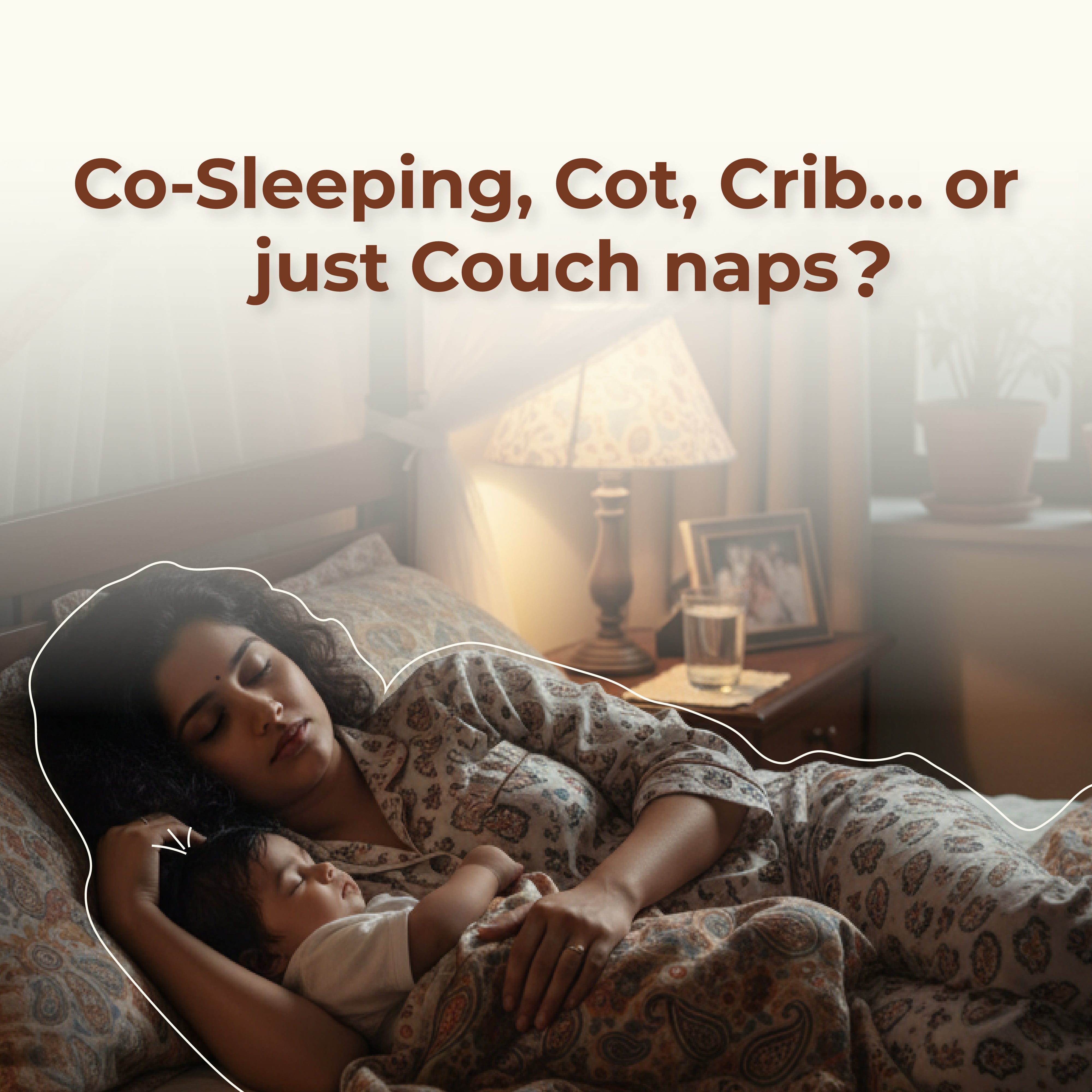
Co-Sleeping, Cot, Crib… or Just Couch Naps?
Not a Debate, a Conversation
In countless Indian homes, bedtime doesn’t look like a Pinterest-perfect nursery. A baby may drift off nestled in the crook of a mother’s arm, sprawled on a grandparent’s lap, or rocking in a cane cradle that creaks gently with every sway. Sometimes naps happen in a crib gifted at the baby shower, sometimes on a thin cotton mattress on the floor, and often on a shared bed where presence feels stronger than furniture.
The truth? There is no one “right” way for baby sleep. There are only ways that feel safe, instinctive, and aligned with the rhythm of your family.

Sleep as Co-Regulation, Not Independence
Modern advice often insists on independent sleep for babies:
“Teach them to self-soothe.”
“Don’t rock them.”
“Don’t feed them to sleep.”
But step back for a moment. Newborns have just left the womb. For nine months, they knew only one thing: co-regulation.
Co-regulation means your baby’s tiny body syncs with yours: heartbeat slows with your breath, body temperature steadies against your skin, nervous system calms with your presence. Research shows babies who co-sleep safely or room-share regulate breathing, temperature, and stress better than those sleeping entirely alone.
So if your baby sleeps best curled up against you, it isn’t dependency. It’s biology remembering safety.
Between Tradition and Trends
Our grandmothers never debated crib vs cot. Babies slept where mothers could reach them — on family beds, in hanging cradles, or on floor mats. Safety meant closeness, not separation.
Today, Instagram nurseries showcase white cribs, coordinated bedding, and solo rooms. Yet in Indian households, sleep setups remain diverse:
-
Co-sleeping in joint families for bonding and ease.
-
Room-sharing with cots in nuclear setups.
-
Floor beds or traditional cradles where safety is redefined through simplicity.
There is no universal formula. Only cultural rhythm and conscious safety.
The Real Question: Is Co-Sleeping Safe for Newborns?
Whether you choose a crib, cot, or bed-sharing, the essentials are the same:
-
A firm sleep surface (avoid couches, beanbags, or overly soft beds).
-
No loose bedding, pillows, or toys near the baby.
-
Always place your baby on their back for sleep.
-
Ensure caregivers are sober, alert, and well-rested. Never co-sleep if under medication, alcohol, or extreme exhaustion.
The heart of safe sleep isn’t about furniture. It’s about removing hazards while honoring instinct.
Root and Soil’s Bedtime Rituals

At Root & Soil, we don’t dictate where your baby should sleep. We focus on creating conditions of safety and comfort, no matter the setup.
-
A warm oil massage with cold-pressed coconut or almond oils lowers cortisol, helping babies ease into sleep.
-
Scent-free balms soothe irritation so babies don’t wake scratching.
-
Simple nighttime rituals anchor both parent and child in a calm presence.
Because restful sleep isn’t about cribs or cots. It’s about feeling safe — in your skin, and in your parent’s presence.
Sleep Isn’t Perfection... It’s Rhythm
Some nights, your baby will sleep hours in a crib. Other nights, only in your arms. Some naps may happen mid-feed, mid-lullaby, or mid-chaos. And that’s okay.
Baby sleep is not a battle to be won. It’s a rhythm you create together — a dance of biology, love, and trust.
🌙 FAQs: Baby Sleep & Co-Sleeping Safety
-
Is co-sleeping safe for newborns?
Yes — when practiced mindfully. Use a firm mattress, avoid pillows/blankets, and ensure parents are non-smokers and alert. Room-sharing (baby in a cot beside the parent bed) is often the safest co-sleeping method, reducing SIDS risk. -
Why does my baby wake when I put them down?
It’s not a “bad habit” — it’s biology. Babies crave the warmth, rhythm, and movement of the womb. Separation triggers stress. Gentle transitions, swaddling, or placing your hand on their chest can ease the shift. -
Are couch naps safe?
No. Sofas and couches are unsafe due to cushions, gaps, and suffocation risks. Even supervised naps are safer on a flat, firm bed or crib. -
Can baby massage really improve sleep?
Yes. Studies show massage lowers cortisol and boosts oxytocin. Parents using Root and Soil oils often notice babies fall asleep faster and stay asleep longer. -
Do all babies need cribs?
Not always. Cribs provide structure, but floor beds, cots, or shared beds can work too. What matters most is sleep safety practices, not furniture choice. -
Should I stop rocking or feeding to sleep?
No. In early months, rocking or nursing to sleep are natural soothing tools. Over time, babies learn independent settling, but closeness builds trust — not “bad habits.” -
Can white noise help babies sleep better?
Yes. White noise mimics womb sounds and masks household noise. It reduces the startle reflex and can help babies sleep longer, especially in noisy homes. -
How long should newborns sleep in the parents’ room?
The AAP recommends room-sharing for at least 6 months to reduce SIDS risk. Some families extend it to a year, balancing safety with comfort. -
Can Root and Soil products support bedtime routines?
Absolutely. A warm massage with our coconut or almond oil, followed by gentle touch, helps settle babies into deeper sleep.
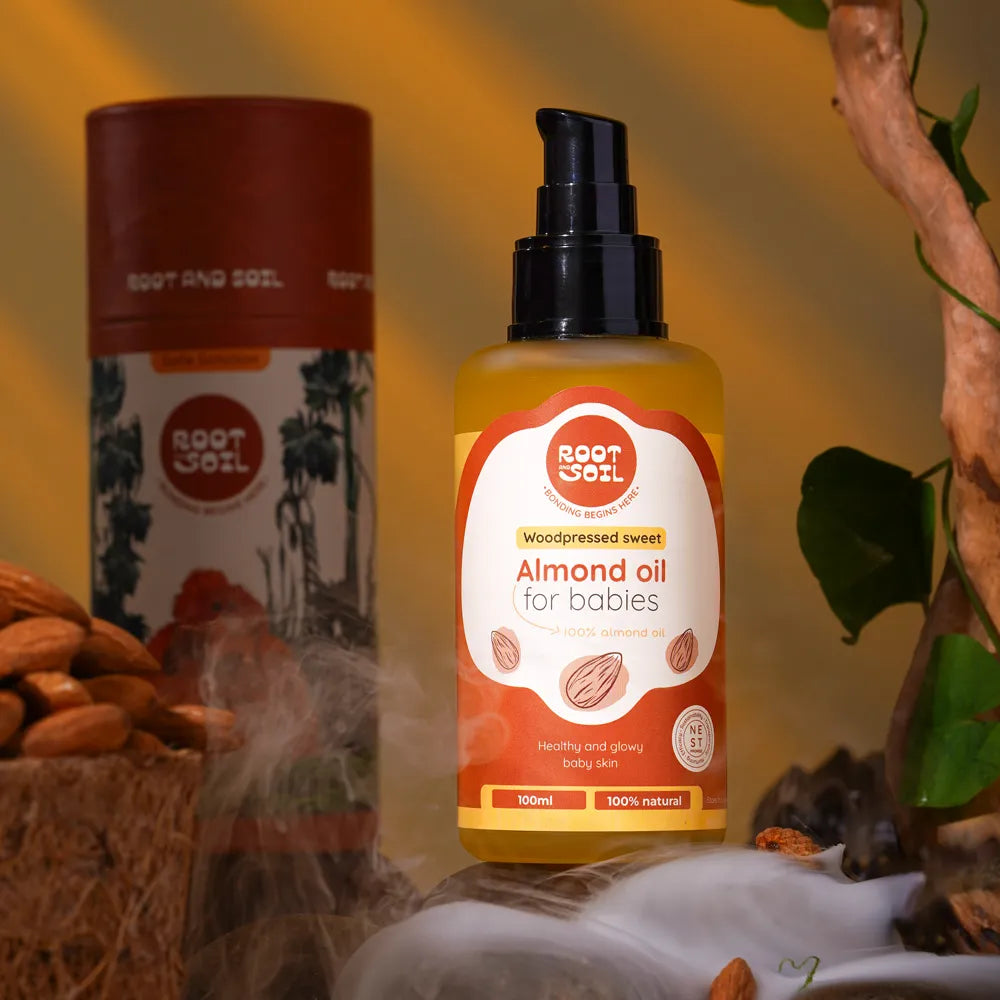
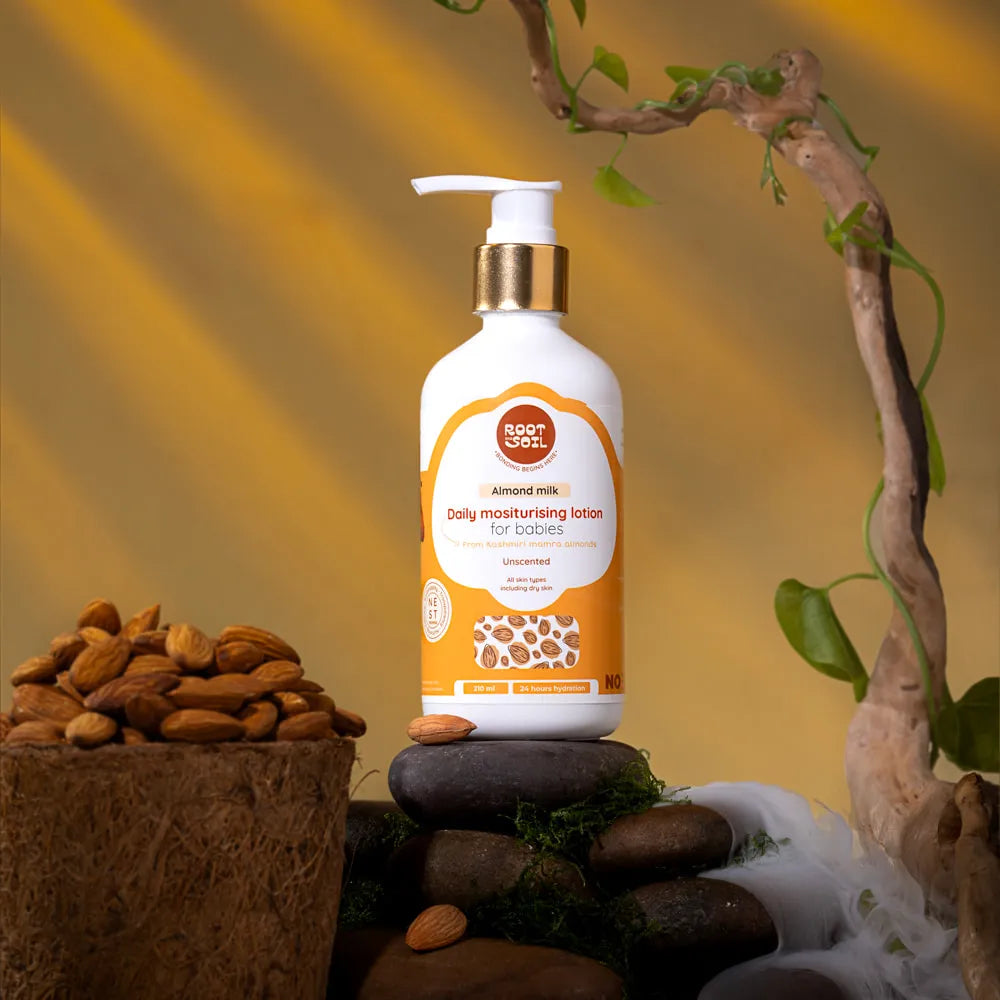
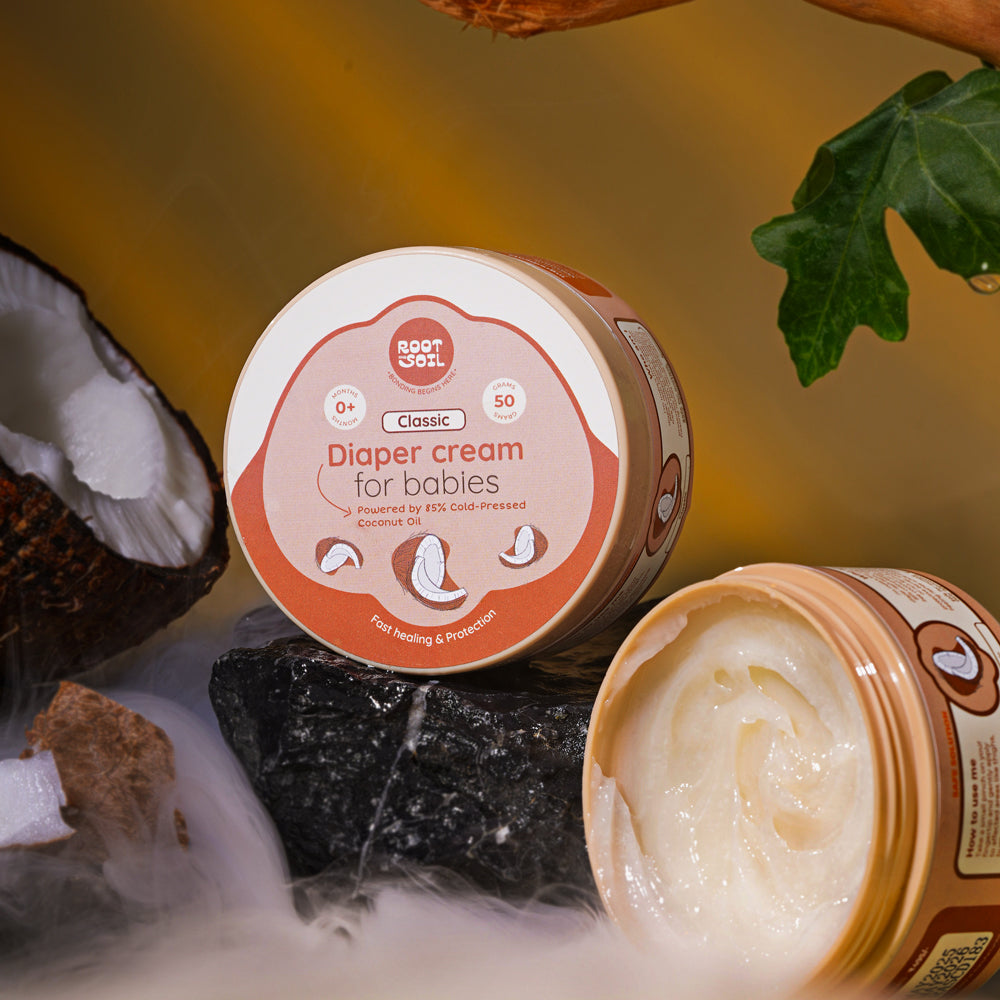
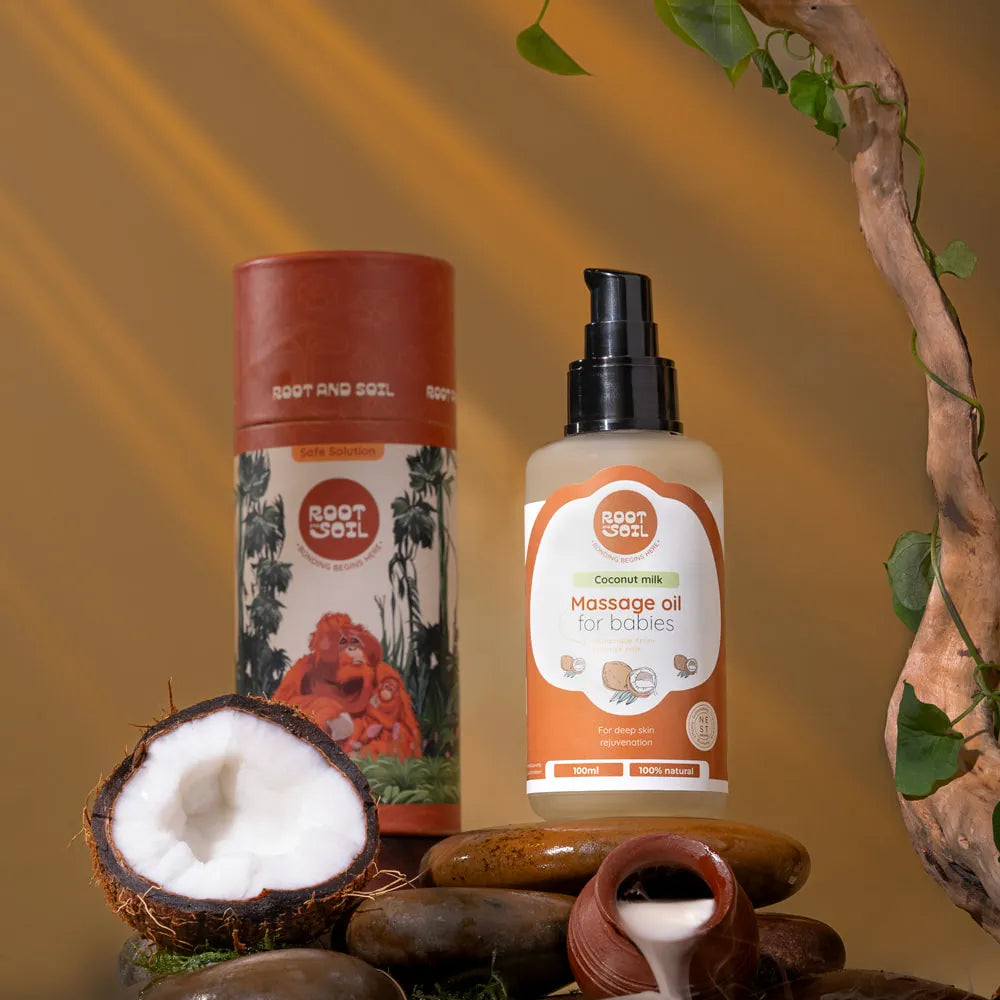
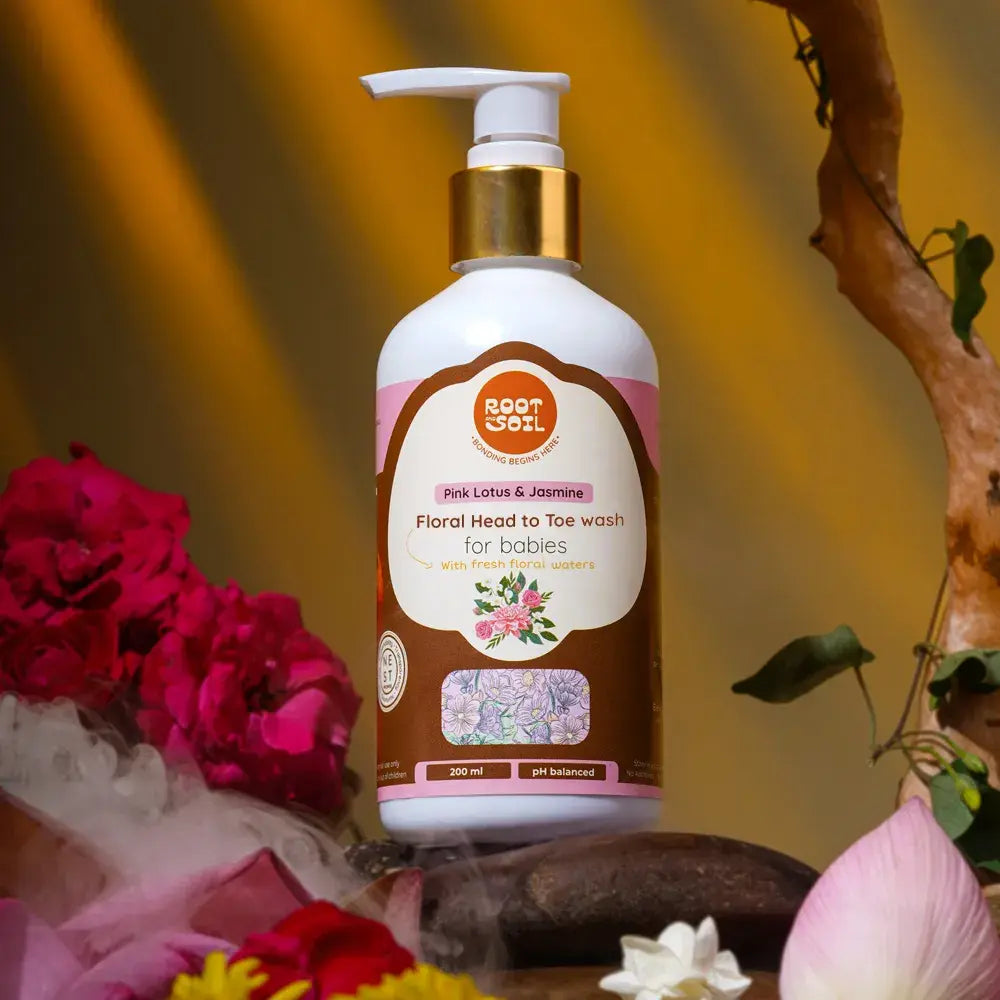





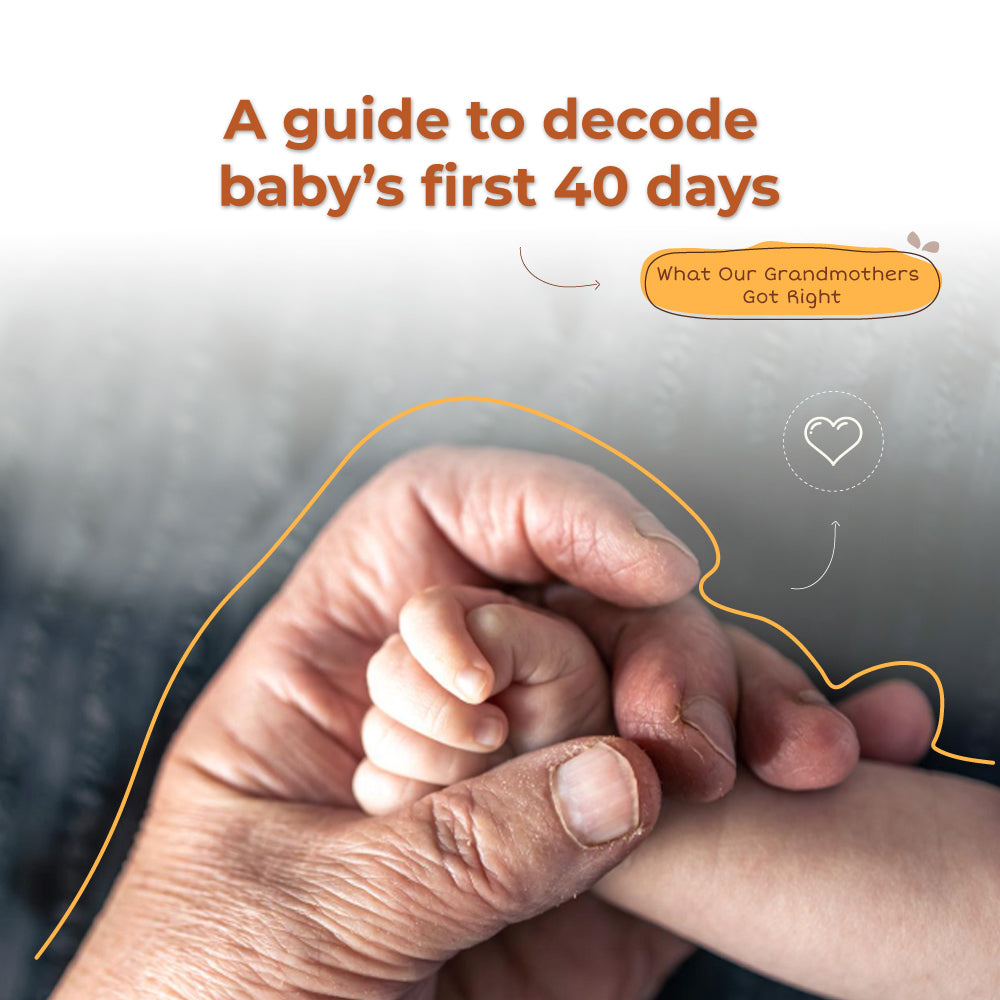








4 Comments
fen1vo
pktwoo
p1t6d9
fvsv2j